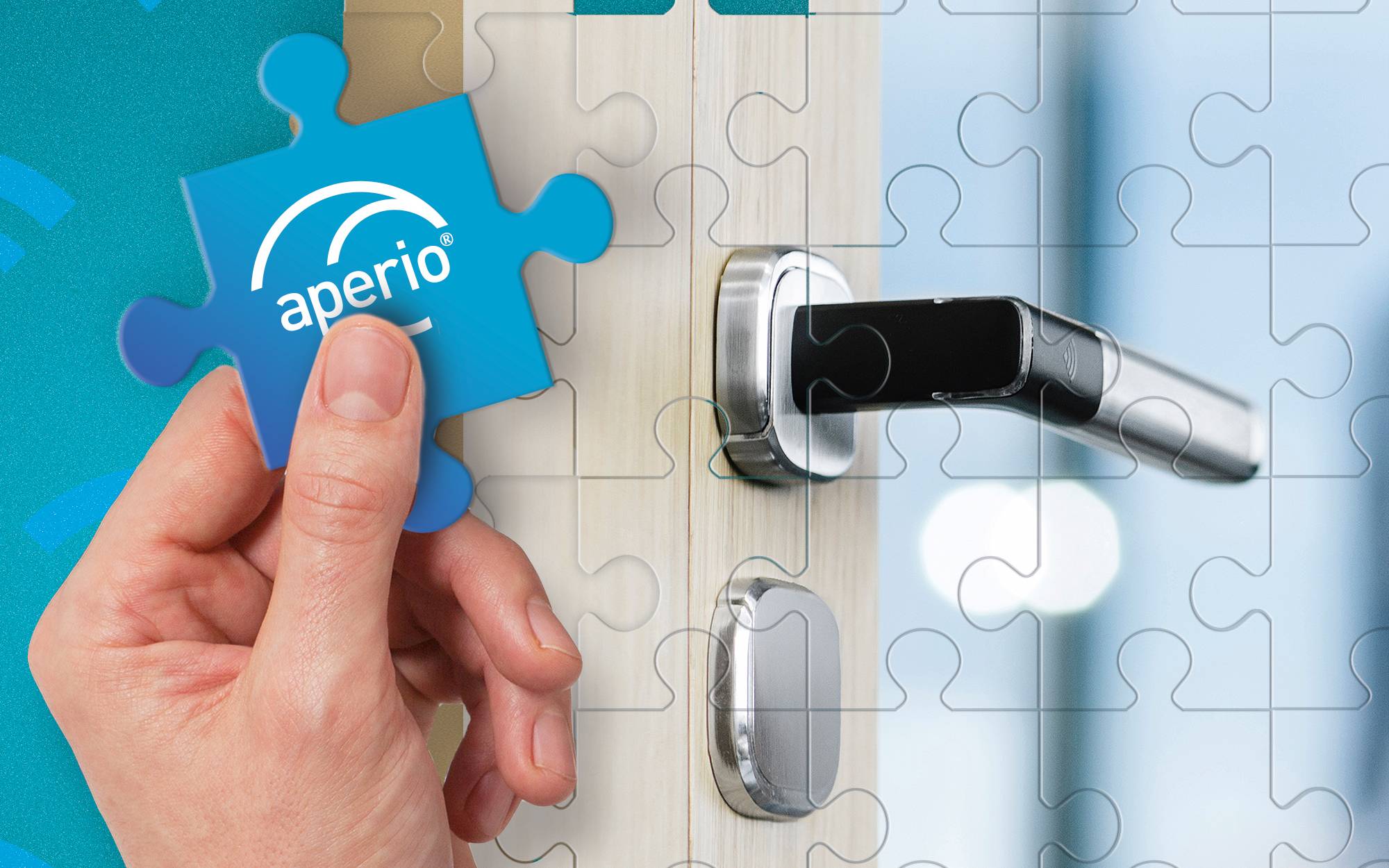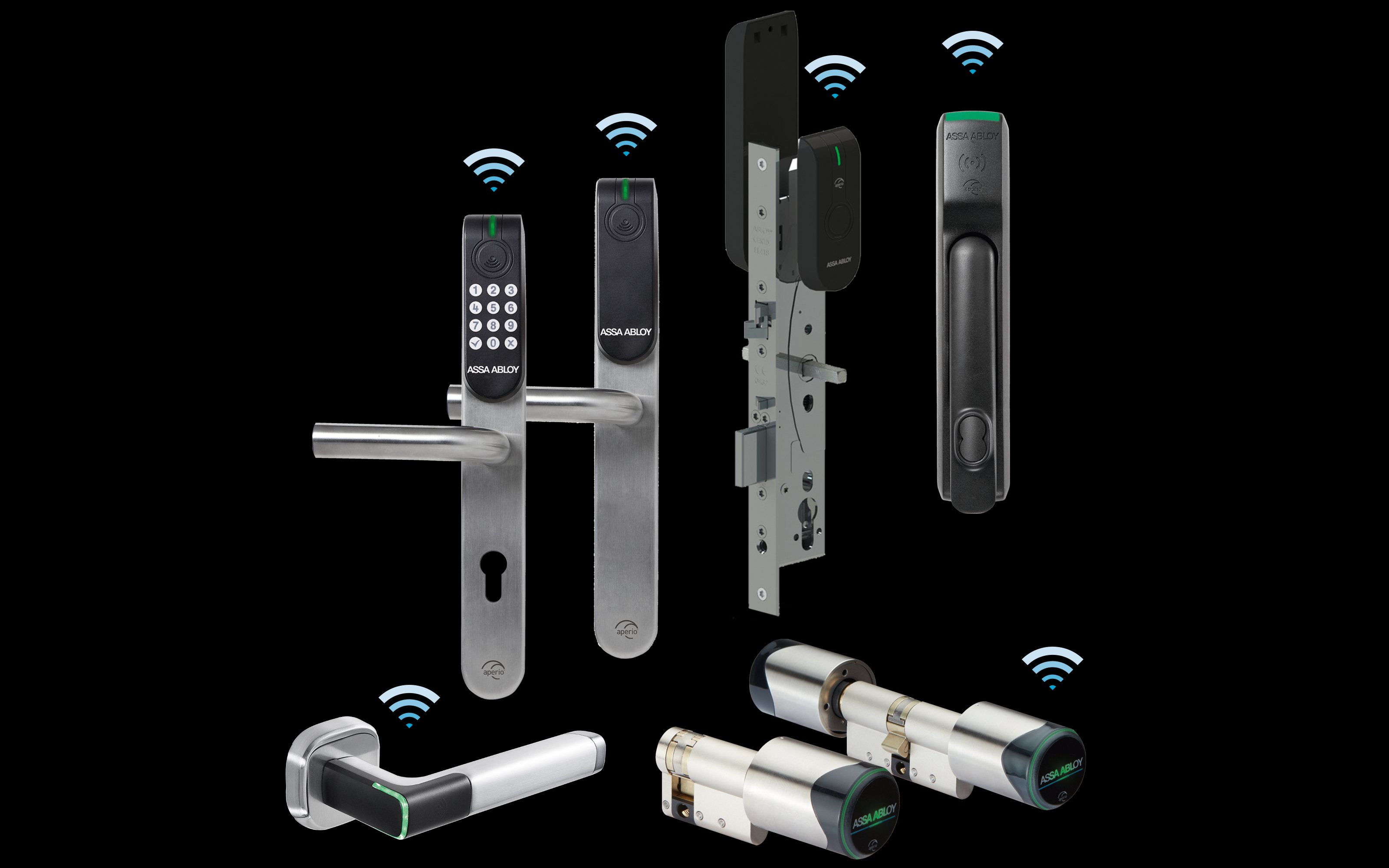How easily can wireless locks extend the reach of your access control?
As building security becomes smarter, the need for electronic access control systems spreads further. Wired access points and security doors have long been the backbone. Yet at the same time, even buildings with extensive electronic systems leave mechanically locked doors unmonitored and unguarded — and certainly not “smart”. Mechanical locks cannot be connected. Thankfully, the latest generation of wireless locks can replace them easily and integrate them seamlessly within almost any access system.
A recent industry survey — cited in the “Wireless Access Control Report 2018”, from ASSA ABLOY and IFSEC Global — finds integration is an increasing concern. Over 90% of industry professionals polled for the report suggest integrating security systems with each other (and with other smart building systems) has increased in importance in the last few years.
Integration is a recurring theme in conversations among professionals. For 53% of survey respondents, easy integration with CCTV, alarms, time and attendance, lighting and HVAC would make them interested in upgrading to a particular product — more than any other factor. Forty-three percent said easier integration with existing access control systems would make them more likely to upgrade. But why the focus on integration? What are the advantages?
Why integrate?
Fewer security interfaces are easier to support and so require less training. Integration can also enhance the experience of building occupants. One credential opens the car park, then the building, and accesses their laptop and buys lunch in the café.
Integration across the business also means security systems — and security teams — contribute to business efficiency, not just the protection of people, premises and other assets. Integrate HR systems with your access control system, for instance, and smart access cards can be automatically revoked when people leave the organisation, reducing overheads and even headcount.
A majority of those polled for the “Wireless Access Control Report 2018” believe it very important (58%) that access control supports open standards in order to be flexible and future-proofed. A huge majority (91%) consider it at least somewhat important. Future-proofing is high on any list of procurement criteria.
Will your system accommodate a changing business and the evolution of functions within it? Can you extend access control with components that contribute to, rather than detract from, the flexibility of all your building systems?
The solution to extend access control
Expanding the coverage of traditional locks can be expensive and intrusive. But one fast, easy and cost-effective alternative enables you to forget about keys and the hassles of key management: wireless devices like Aperio®, battery-powered locks with integrated RFID-readers. The aforementioned report cites growth forecasts for the wireless access control market of around 8% annually through 2025. The ease and cost-efficient integration wireless offers is surely driving this growth.
Because Aperio® has an open architecture, it is flexible and modular, so those who already have wired access control and want to add more doors to their existing system find wireless is the solution. Aperio® wireless locks integrate with security systems from over 100 different OEMs worldwide, for new installations or to upgrade an existing system. Integration is seamless, extending the reach of an existing system with future-proofed devices. Security administrators operate the new Aperio®-equipped doors from the same interface as the installed system. Site users carry a single smart access card for all doors, and other functions like canteen payments or library loans are just as easy to integrate.
What if your security system uses mechanical keys, without electronic access control? Wireless locks like Aperio® can also be the right solution. Battery-powered Aperio® RFID-equipped cylinders, escutcheons, handles and locks can be fitted as a new access control system, or extend an existing installation by linking new doors to the same system wirelessly. There’s no need for staff to swap their key-cards, nor for anyone to carry more than one credential.
Aperio® locks work within almost every major access control ecosystem on the planet, from over 100 different manufacturers. They are energy-efficient, with batteries lasting an average of 40,000 cycles (typically 2 years) before they need replacing.
“It’s easy to start the upgrade process,” says Matthias Weiß, Aperio® Product Manager at ASSA ABLOY EMEA. “Your security or facilities manager only needs to contact their regular access control provider to find out if they offer Aperio®. We can upgrade nearly any system.”
Aperio® integrates access control — quickly and painlessly
Installing wireless locks is also more cost-effective than hard-wiring more doors, because there’s no cabling or invasive building work around the door. Changing door hardware is unnecessary. For example, it’s fast and easy to switch a mechanical handle for an Aperio® wireless handle with integrated RFID reader, to bring more doors into an access system. (Installation takes mere minutes: see https://youtu.be/lr6Sw95qqm8)
Aperio® devices with built-in RFID readers fit almost any opening or security level. Aperio® locks protect both exterior and interior doors, from fire and escape route doors to meeting rooms, labs and offices; wooden, glass or aluminium doors are no obstacle. The portfolio includes cylinders, escutcheons and complete locks for security doors, plus a revolutionary new wireless handle with integrated RFID reader, which recently won Intersec’s Access Control Product of the Year. Aperio® locks are compatible with all common door profiles: Euro, French, Finnish, Scandinavian and Swiss. Integration with your existing system can be Online or Offline, or both.
To discover if you can future-proof your access control with Aperio®, download a fast, free Compatibility Check at https://campaigns.assaabloyopeningsolutions.eu/aperio-upgrade?utm_campaign=aperio-upgrade-any-system-emea-en-2019-02&utm_source=insecurity&utm_medium=banner.





